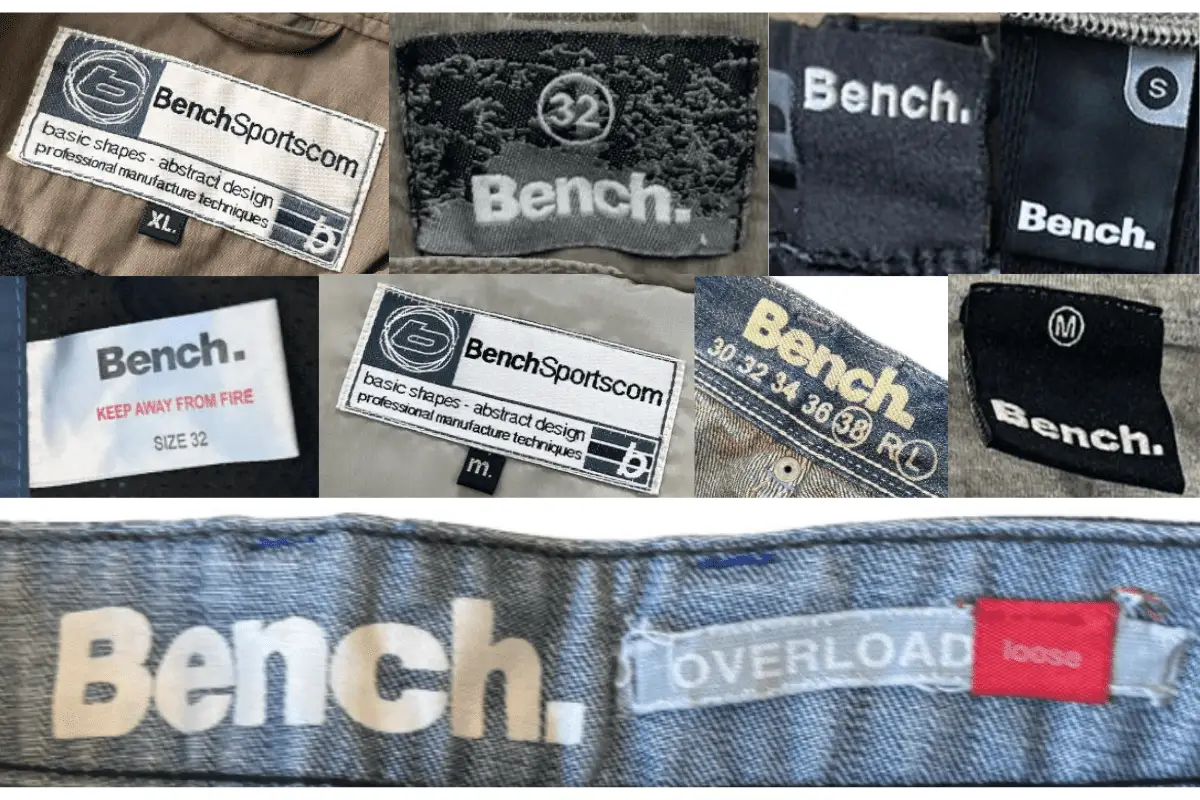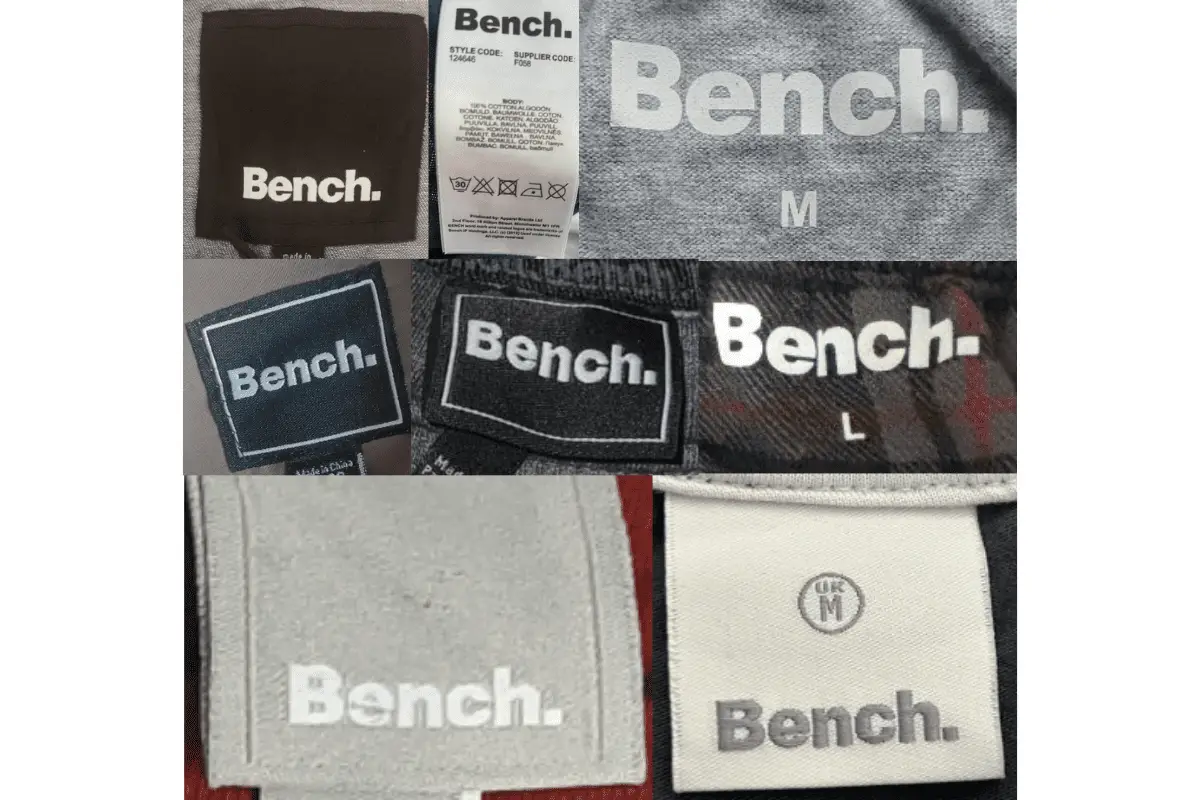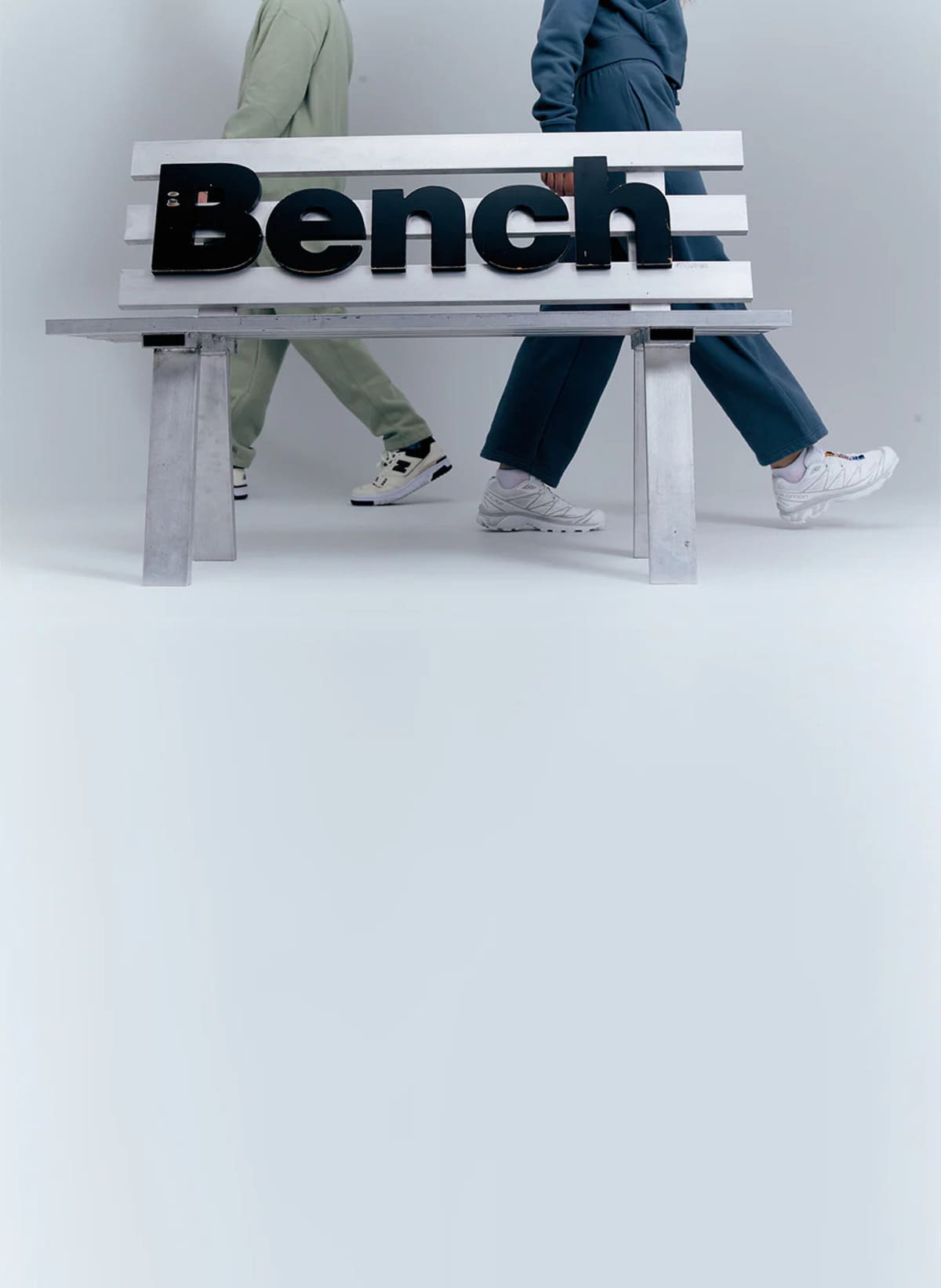Founded in the heart of Manchester in 1989, Bench began as a brand deeply rooted in the vibrant subcultures of the time. With skateboarding and the burgeoning ‘Madchester’ music scene as its backdrop, Bench started its journey by creating graphic T-shirts that resonated with the urban youth. Founded by Nayef Marar and Barrie Suddons, Bench captured the pulse of the streets, offering apparel that was not just clothing but a symbol of a lifestyle. As the brand evolved, it grew from its modest beginnings into a global icon, embodying the essence of streetwear and expanding its range to include everything from denim to accessories.
Throughout the 1990s and 2000s, Bench became synonymous with youth culture, particularly in the UK. The brand’s distinctive logo, featuring the word “Bench.” with its iconic period, became a familiar sight on hoodies, jackets, and jeans worn by teenagers and young adults across the country. Bench was more than just a brand; it was a statement, a way for young people to express their identity. The clothes were designed for real life—whether you were hitting the skate park, going to a music festival, or just hanging out with friends, Bench offered something that fit the vibe.
Despite facing financial challenges and entering administration in 2018, Bench’s legacy continues to thrive. The brand has been revitalized under new ownership, with Gordon Brothers steering its development and Apparel Brands Limited relaunching it in Europe. As Bench enters a new era, it remains committed to its roots in streetwear, while embracing modern trends and technologies to stay relevant in an ever-changing fashion landscape. Today, Bench is poised to recapture the hearts of a new generation, proving that its blend of authenticity and innovation is timeless.
Stunning Bench Adventure Commercial
How to tell if Bench is vintage from the logo
Bench, a brand known for its urban streetwear and casual fashion, has maintained a consistent brand identity over the years. The logo has become a significant part of this identity, evolving slightly to reflect modern trends while still staying true to its roots. Identifying whether a Bench item is vintage can often be determined by closely examining the logo used during different eras.
1989 to now Bench logo
- The logo introduced in 1989 has remained largely consistent to the present day.
- The design is simple and modern, featuring the brand name “Bench.” in bold, sans-serif typography.
- The period after the word “Bench” is a distinct characteristic, making this logo easily recognizable.
- The simplicity and clarity of the logo reflect the brand’s focus on urban and streetwear fashion, which has remained a core part of its identity since the late 1980s.
- This logo has been used consistently across a variety of products, from clothing to accessories, making it a staple of the brand’s image.

1989 to now Bench logo
How to tell if Bench is vintage from the tags
Bench has evolved significantly over the years, with its branding and tag designs reflecting the different eras of its growth. From its early beginnings to its more modern designs, the tags offer insight into the time period of each garment. Bench’s tags have featured various designs, from simple and bold text to more elaborate labels that include specific manufacturing details. Below is a guide to identifying Bench vintage pieces based on the tags from the 1990s, 2000s, and 2010s.
Having trouble identifying vintage tags or labels? Upload a picture on our vintage tag identification page, and we’ll assist you!
1990s vintage Bench tags
- Tags prominently display the “Bench.” logo with a period at the end, which became a recognizable feature of the brand during this time.
- Some tags include additional design elements such as red accents or background images, often with a focus on minimalistic and bold typography.
- The tags may include simple size indicators, typically in white or black, with the Bench logo often centered.
- Material is generally durable, with woven tags being common in this era, signifying the brand’s focus on quality and longevity.

1990s Bench tags
2000s vintage Bench tags
- The Bench logo remains prominent, often in white or silver text on darker backgrounds, maintaining the brand’s clean and modern aesthetic.
- Tags from this era frequently include more detailed information about the garment, such as size, care instructions, and manufacturing details.
- Square or rectangular tags are common, with the logo sometimes enclosed within a box or border.
- Tags may also feature additional branding, like the inclusion of slogans or secondary labels with specific product lines, such as “BenchSportscom.”

2000s Bench tags
2010s vintage Bench tags
- Modernization of the tag design is evident, with the “Bench.” logo often appearing in a streamlined and minimalist format.
- Use of varied materials and textures in the tags, with some featuring a more rubberized or plastic feel.
- Size indicators are still common, often integrated into the design of the main tag or as separate small tags placed near the main label.
- Tags from this era may also include specific manufacturing or style codes, reflecting the brand’s expansion and the need for more detailed product identification.

2010s Bench tags




